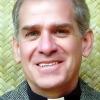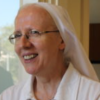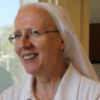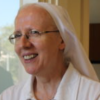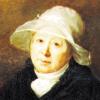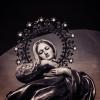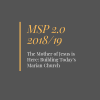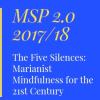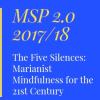E-Publications
NACMS has classified our publications by level to aid you in finding material most helpful to you:
- Basic for those new to the Marianist world and having little or no prior knowledge of Marianist history or the Marianist charism
- Intermediate for those who have some knowledge and understanding of things Marianist
- Advanced for those who have significant knowledge and understanding of things Marianist and want to go deeper
- Resource materials, including prayers, activities, and reflections for individuals and groups
- Reference materials, including source documents and compendia
You can filter or search our publications below using the Keyword Search function or the "Explore Our Resources" function on the left.
Opening New Doors to Our Knowledge of Blessed Father ChaminadeBrother Tom Redmond, SM, traces the origins of the conflicting time periods for Chaminade’s founding inspiration for the Society of Mary. Was it 1787 or 1797? The result of Brother Tom’s analysis is a “new door,” a deeper understanding, into the Marian dimension of the Marianist charism. |
|
Story of the Beginning of the Sodality of the Madeleine, the MLC of 1800Brother Timothy Phillips, SM, explains the rapid development and organizational structure of Blessed Chaminade's Sodality upon the Founder's return from exile in Spain. |
|
Chaminade's Vision of ChurchBrother Hugh Bihl, SM, explores the Chaminadean understanding of Church and its linkage to the Sodality and the Universal Church. |
|
Father Chaminade and the ChurchFather Eduardo Benlloch, SM, writes about how Chaminade’s contemplation of the mystical body of Christ became combined with his charismatic vision of the figure of Mary in the eternal plan of God. |
|
A Witness of Love: Examining the Correspondence of Four Nonviolent ActivistsIn "A Witness of Love," Caitlin Cipolla-McCulloch writes: "This message of radical love is at the root of nonviolence in the Christian tradition . . . it is central to the lives of four correspondents, William Joseph Chaminade, Adèle de Batz de Trenquelléon, Dorothy Day, and Thomas Merton." |
|
Marianist Theme: MaryThrough words and images, Father Solma explains his rediscovery of Mary . . . a woman some put on "the shelf" following the Second Vatican Council. |
|
Mary and FreedomAccording to Brother Lawrence J. Cada, SM, "American Catholic spirituality draws its most distinctive genius from the high ideals of the American ethos. Freedom is the ideal that will link Marianist spirituality and American Catholic spirituality." |
|
In the Light of the Beatitudes: FMI Circular No. 13Using the beatitudes as a spiritual backdrop pertaining to Adèle's beatification, Sister Franca Zonta, FMI, expounds on Adèle's fidelity to God and her witness to the "bottom up movement" within the Church: holiness found in the the faithfulness to God's call in the ordinary moments of life. |
|
Be Light to the Intellect: FMI Circular No. 6“We carry in body and spirit the wounds of our personal story, a story that has deeply and indelibly marked our past and present life. Wounds, for the most part healed, others perhaps still open, mark our way of being and of inserting ourselves in society, in the community. Our wounds are not hidden from you, O Lord. Pour the balm of your love.” |
|
Marianist Consecrated Life: A Plunge Into the Heart of the Charism (Circular No. 5)This FMI circular, written by Franca Zonta, celebrates the opening of the “Year of the Consecrated Life.” This jubilee year is offered to the consecrated life so that it might become the occasion for making a “grateful remembrance” of the past, embracing the future with hope, and living the present with passion. |
|
Marian Dimension of the ChurchAnthony Garascia explores the "Marian character of holiness" and references scientific inquiry in the process. His paper is a modern look at the beauty of the Scripture-rich heritage we have inherited about our Blessed Mother. |
|
Faith of the Heart in the Heart of the World: Circular No. 4This Marianist Lay Community circular, written by Isabella Moyer, president of the International Organization of Marianist Lay Communities, is a personal reflection, to encourage your own reflection. |
|
Canonization Cause for Mademoiselle de LamourousFather Antonio Gascón, SM, provides an overview of Marie Thérèse de Lamourous' cause for sainthood and the efforts of Father Joseph Verrier related to this holy woman. |
|
The Holy Name of MaryA name, Father Chaminade taught, reveals the identity or the essence of a person. Combining the two meanings for the name of Mary examined here we get “Dolorosa Defiant”—the wounded rebel. |
|
Mary Was a Lay Woman Who Lived in CommunityThis paper addresses three components of Marianist spirituality: empowerment of the laity, Mary, and community. The historical relevance of the establishment of lay groups in Bordeaux is compared in two major biographies of Father Chaminade, and the characteristics of the early communities are presented as a model for today's Church. |
|
"Mother Mary, the Juiciest Tomato of All"“What is your take on Mary?” If you work at a Marianist institution, especially if you are in charge, this question may seem overwhelming. Father Joseph H. Lackner, in sobering candor, explores his relations with Mary. He draws upon literature and Scripture in his reflection and invites the audience to ponder and to grow in relationship with Mary. |
|
Marianist Education WebinarWhat is the gift of Marianist education today? To commemorate 200 years of Marianist Education, NACMS hosted two different webinars in 2019 that featured a panel of Marianist educators addressing this question. |
|
Blessed Are We: How Our Missionary Zeal Can Build the Marian ChurchMargaret M. Lisjak, as part of MSP 2.0, has developed a practical guide with reflection questions related to the concept of "missionary zeal." Lisjak draws her inspiration from Mary and from our Marianist origin story. The resource she has created is excellent to use for a community gathering or in a retreat setting. |
|
Modern Technology and the Five SilencesIn our increasingly wired world, how do we carve out time for silence, especially for those born after the development of the Internet, those who have always had technology at their fingertips? Kay Stone, as part of MSP 2.0, examines the pros and cons of our accelerated world of digital gadgets and provides practical guidance for moments of unplugging to enter into the silent and sacred. |
|
White Privilege Through the Lenses of the Five Silences and Marianist MindfulnessMaureen Hoock, as part of MSP 2.0, looks at “white privilege” as it relates to the culture of the United States. She uses Blessed Chaminade’s Five Silences and Marianist mindfulness as avenues to draw one to greater empathy and understanding for the need for a true discipleship of equals in modern culture. |




